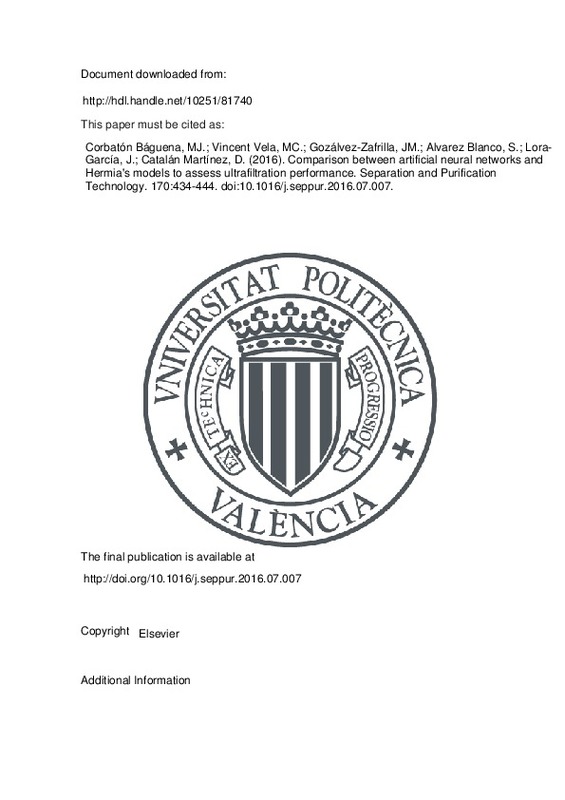JavaScript is disabled for your browser. Some features of this site may not work without it.
Buscar en RiuNet
Listar
Mi cuenta
Estadísticas
Ayuda RiuNet
Admin. UPV
Comparison between artificial neural networks and Hermia's models to assess ultrafiltration performance
Mostrar el registro completo del ítem
Corbatón Báguena, MJ.; Vincent Vela, MC.; Gozálvez-Zafrilla, JM.; Alvarez Blanco, S.; Lora-García, J.; Catalán Martínez, D. (2016). Comparison between artificial neural networks and Hermia's models to assess ultrafiltration performance. Separation and Purification Technology. 170:434-444. https://doi.org/10.1016/j.seppur.2016.07.007
Por favor, use este identificador para citar o enlazar este ítem: http://hdl.handle.net/10251/81740
Ficheros en el ítem
Metadatos del ítem
| Título: | Comparison between artificial neural networks and Hermia's models to assess ultrafiltration performance | |
| Autor: | Corbatón Báguena, María José | |
| Entidad UPV: |
|
|
| Fecha difusión: |
|
|
| Resumen: |
In this work, flux decline during crossflow ultrafiltration of macromolecules with ceramic membranes has been modeled using artificial neural networks. The artificial neural network tested was the multilayer perceptron. ...[+]
|
|
| Palabras clave: |
|
|
| Derechos de uso: | Reserva de todos los derechos | |
| Fuente: |
|
|
| DOI: |
|
|
| Editorial: |
|
|
| Versión del editor: | http://doi.org/10.1016/j.seppur.2016.07.007 | |
| Código del Proyecto: |
|
|
| Agradecimientos: |
|
|
| Tipo: |
|







![[Cerrado]](/themes/UPV/images/candado.png)


